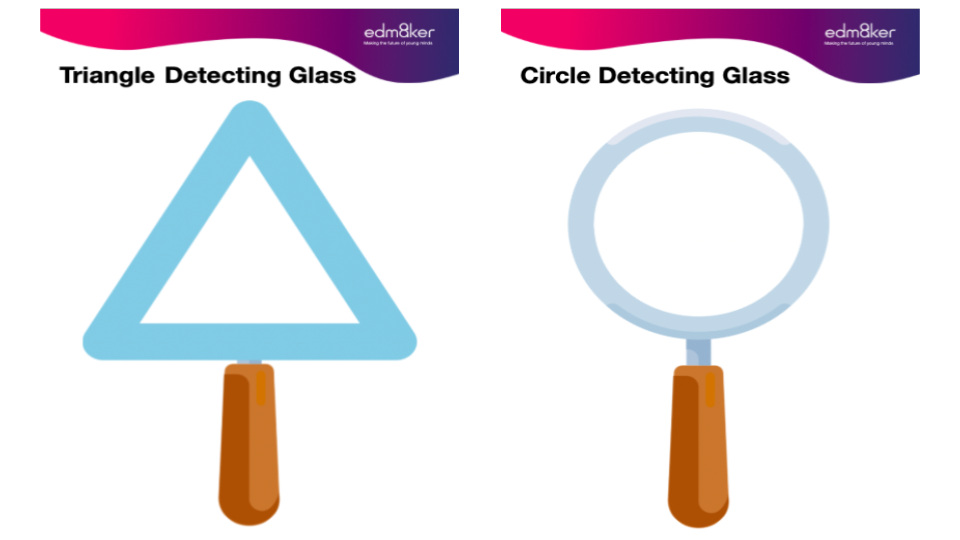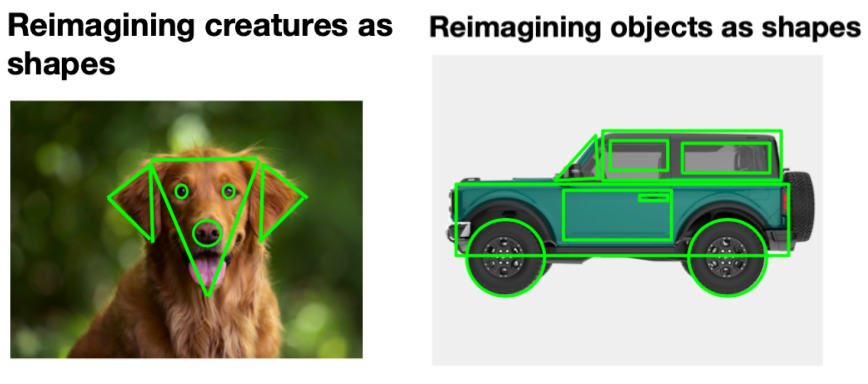This lesson allows learners to understand shape-defining attributes and implement their understanding by becoming shape artists. In addition, it will help learners become more perceptive of their surroundings, perceive the relationships between various items, and be better able to appreciate artistic creations.
Prior Knowledge:
Learners should be able to:
- Recognize 2-D Shapes.
Lesson Objectives:
Learners will:
- Identify different shapes that they see around them.
- Construct knowledge of 2-D shapes like triangles, circles, squares, and rectangles.
- Create shape art utilizing only 2-D shapes.
- Share shape art with peers and get inspired via a gallery walk.
Learning Outcomes:
Learners will be able to:
- Recognize shapes in everyday objects and settings around them.
- Construct knowledge of 2-D shapes and their attributes like triangles, circles, squares, and rectangles.
- Implement their knowledge of 2-D shapes and create Shape Art.
- Share their shape art with peers and get inspired via a gallery walk.
Lesson Overview
| Overview | Activity Objectives | |
| Opening Activity | Learners revisit 2-D shapes and their attributes and look for specific shapes through shape-detecting glasses. |
|
| Main Activity | Learners will create shape art made entirely out of 2-D shapes. |
|
| Closing Activity | Learners will share their creations with peers through a gallery walk. |
|
Resources:
- Shape-detecting template cutouts.
- Presentation slides to show students
- Devices like tablets/ laptops/computers for each team.
- Stable wifi connection.
- Access to sketch.io on each device.
Pre-lesson prep:
- Like all lessons on Eddy, this lesson follows a certain approach. If this is your first time implementing an Eddy lesson, check out our lesson approach for more information.
- Prepare necessary logistics in advance.
- Cutouts of Shape Detecting Glass template: To create a stable shape-detecting glass, you can either paste the cutout on a piece of cardboard or add popsicle sticks. This will ensure that the learners can use it smoothly during the activity. If your class has a knack for craftwork, this activity could also be conducted with the help of your learners.
- Prepare necessary technology/hardware in advance.
- Devices (tablets/laptops/Chromebooks/computers) - one per team
- A stable wifi connection.
- Access to sketch.io on each device.












